The outdoor art installations defining public spaces
Public art is different from regular art; it has to interact with and enhance its surroundings. These are some of the most surprising and compelling outdoor art installations in the world
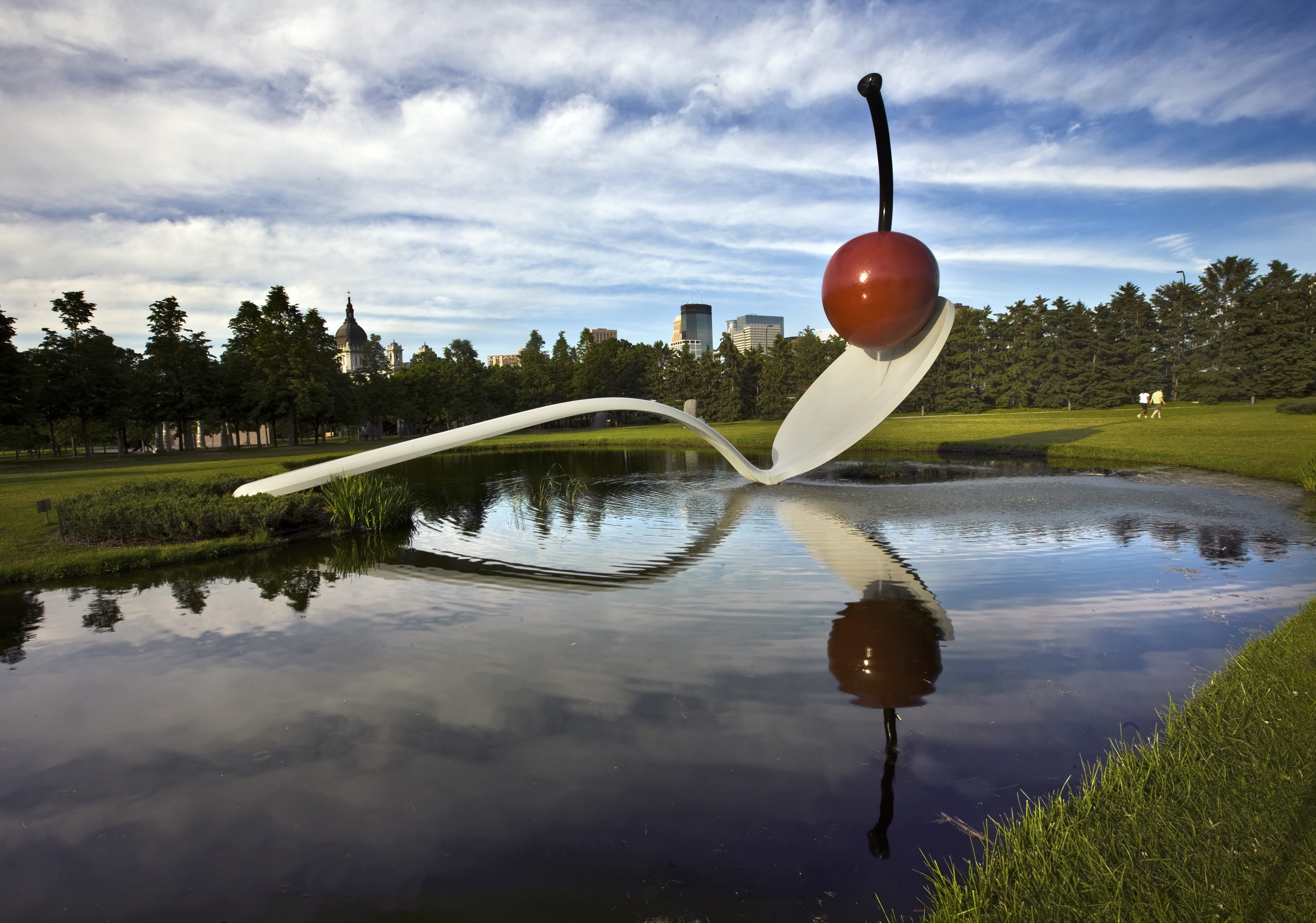
There’s something majestic about outdoor art. Against landscapes, cityscapes or seascapes, sculpture can take on an entirely new life. Al fresco, art is at its most accessible. It is used to commemorate, celebrate, shock, invite engagement and define the outdoor space it occupies.
Read our guide to the best outdoor art installations to stumble upon or seek out.
Roden Crater, James Turrell, USA
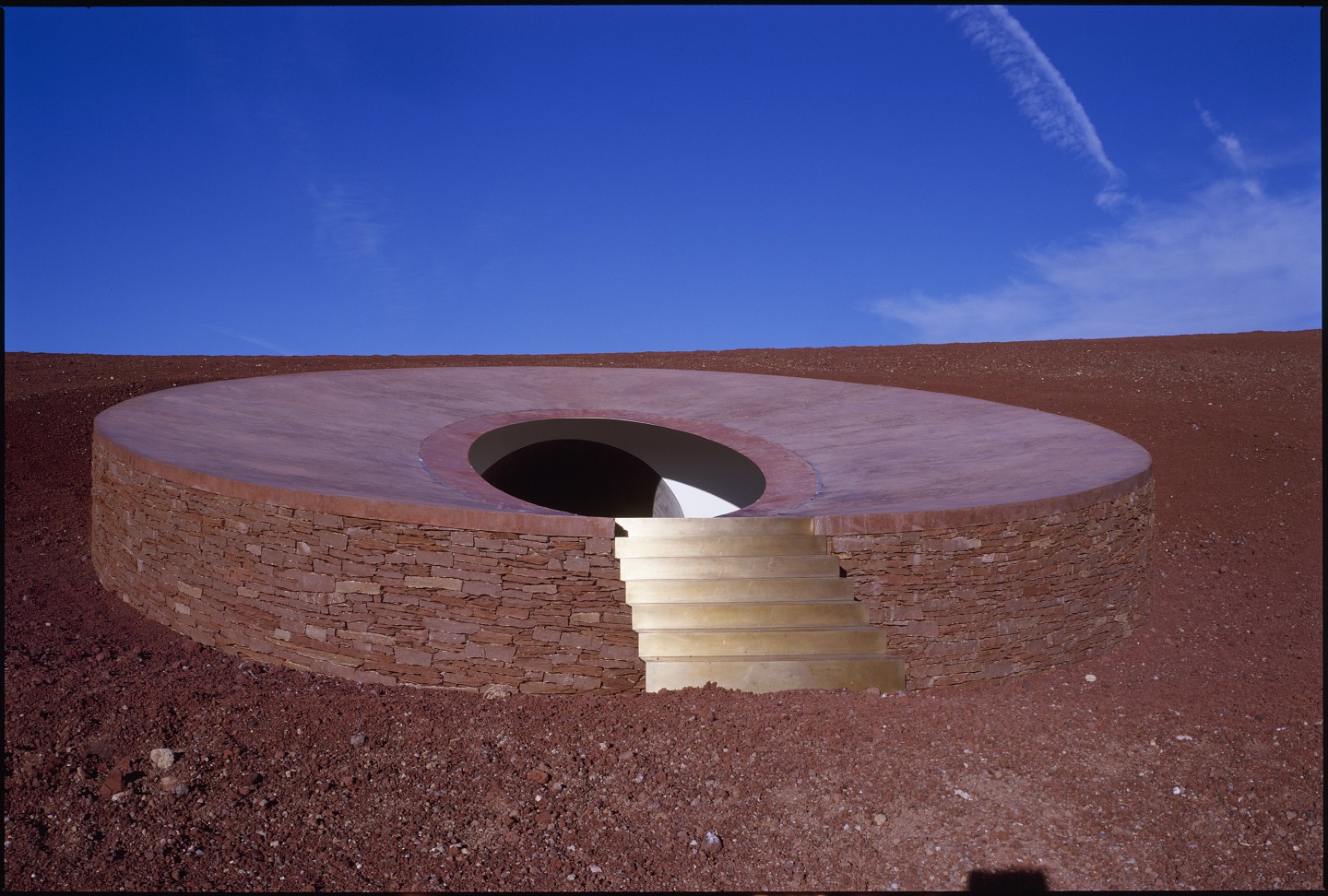
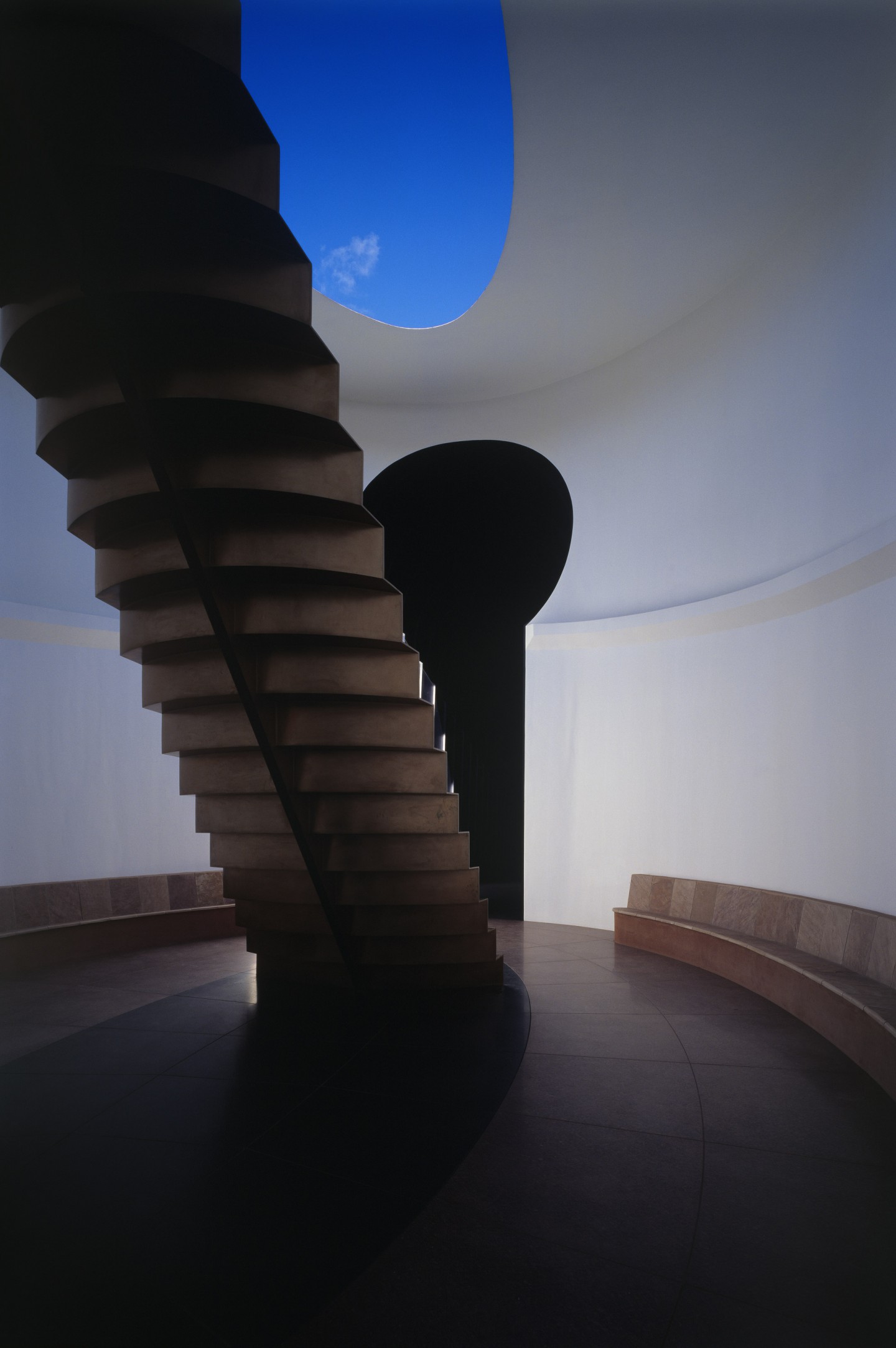
This large-scale artwork, located in the Painted Desert in Northern Arizona, is in the process of being created by light and space artist James Turrell. Externally, the Roden Crater looks like a dormant cinder cone. Inside, the cone has been transformed into a series of engineered spaces, tunnels and apertures which capture sunlight during the day and the planets and stars at night. Located far from light pollution and at a high altitude, Turrell has fashioned the Roden Crater into a site where ‘the cycles of geologic and celestial time can be directly experienced’, playing into the tradition of American landscape art that began in the 1960s.
Forever Bicycles, Ai Weiwei, Chile
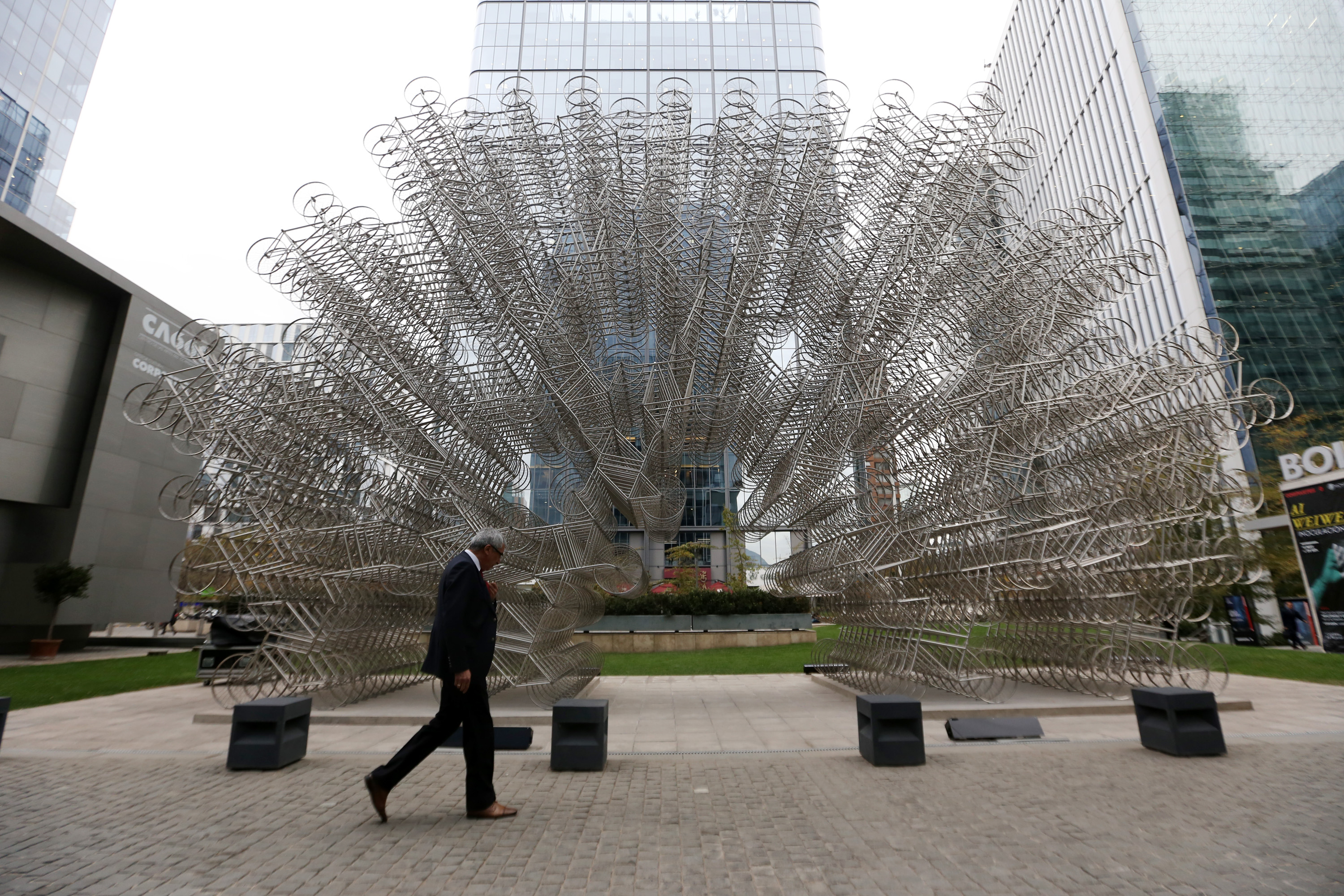
CLAUDIO REYES
Ai Weiwei has always had a thing about bicycles; they’ve been a recurring theme in the Chinese artist’s installations since 2008. Forever Bicycles is a reference to the Shanghai-based Forever Company, and piles up to 1000 bicycles on top of each other to create installations of up to 10 metres high. The scale and repetition of these sculptures, which pop up all over the world, allude to the mass production of Chinese manufacturing, but there is also an element of nostalgia in that bicycles were an important part of Weiwei’s childhood. There is also commentary to be had in the fact that, although they are associated with movement, the stuck-together bicycles in the sculptures are unable to move.
Love Me, Richard Hudson, USA
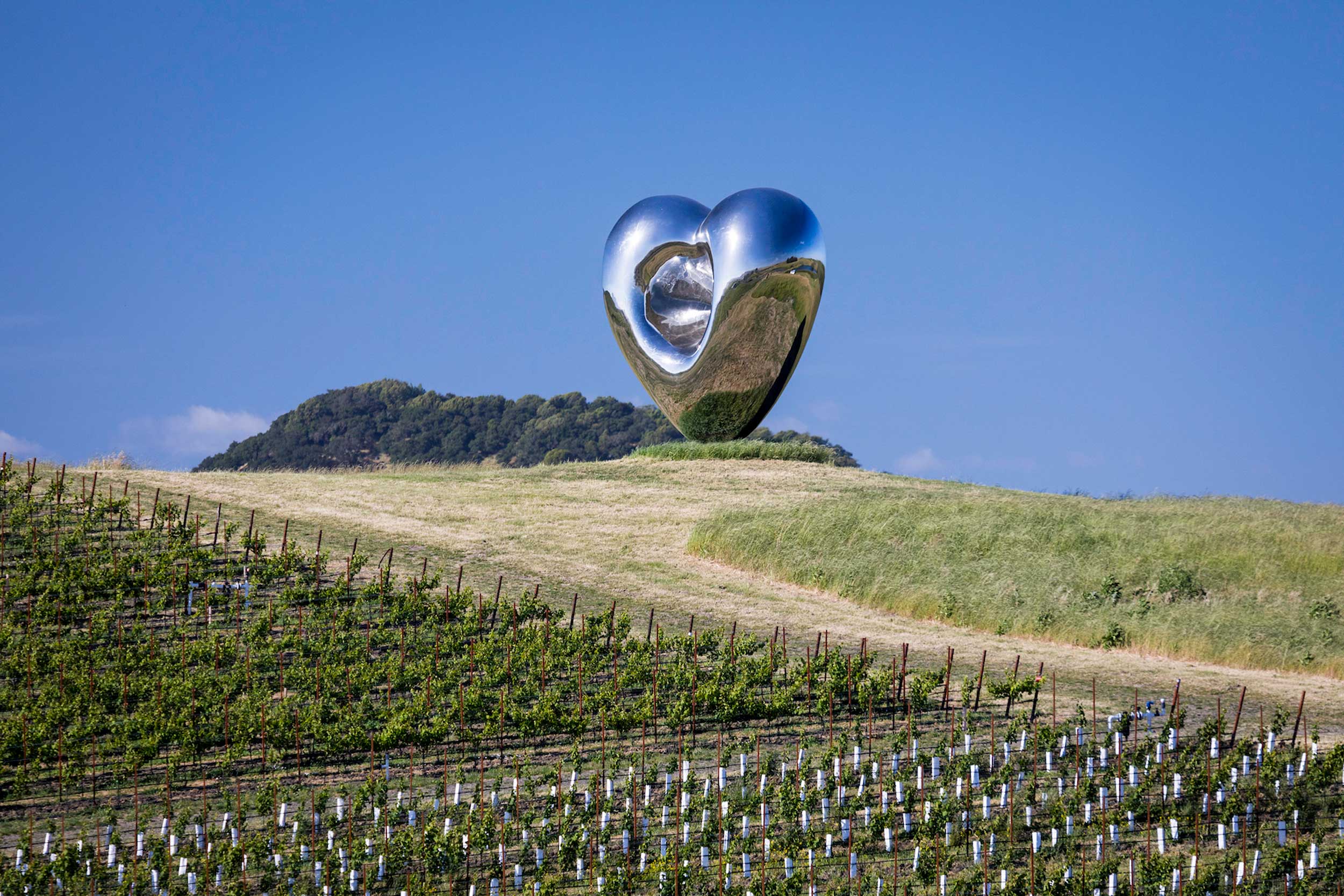
The mirrored surfaces of Richard Hudson’s Love Me series, when set amidst their natural surroundings, look surrealistic, like something out of a dream. The giant heart sculpture pictured here is located in the Donum Sculpture Park in California: poised impractically on its point, it is made of polished steel, reflecting the earth and sky around it. In its centre is a deep cavity, with a corresponding protrusion on the other side, as though the sculpture has been dented by a powerful force. Hudson says that this represents ‘the creation of the Universe through a black hole, together with the creation of life at the moment of conception’.
Spoonbridge and Cherry, Claes Oldenburg and Coosje van Bruggen, USA
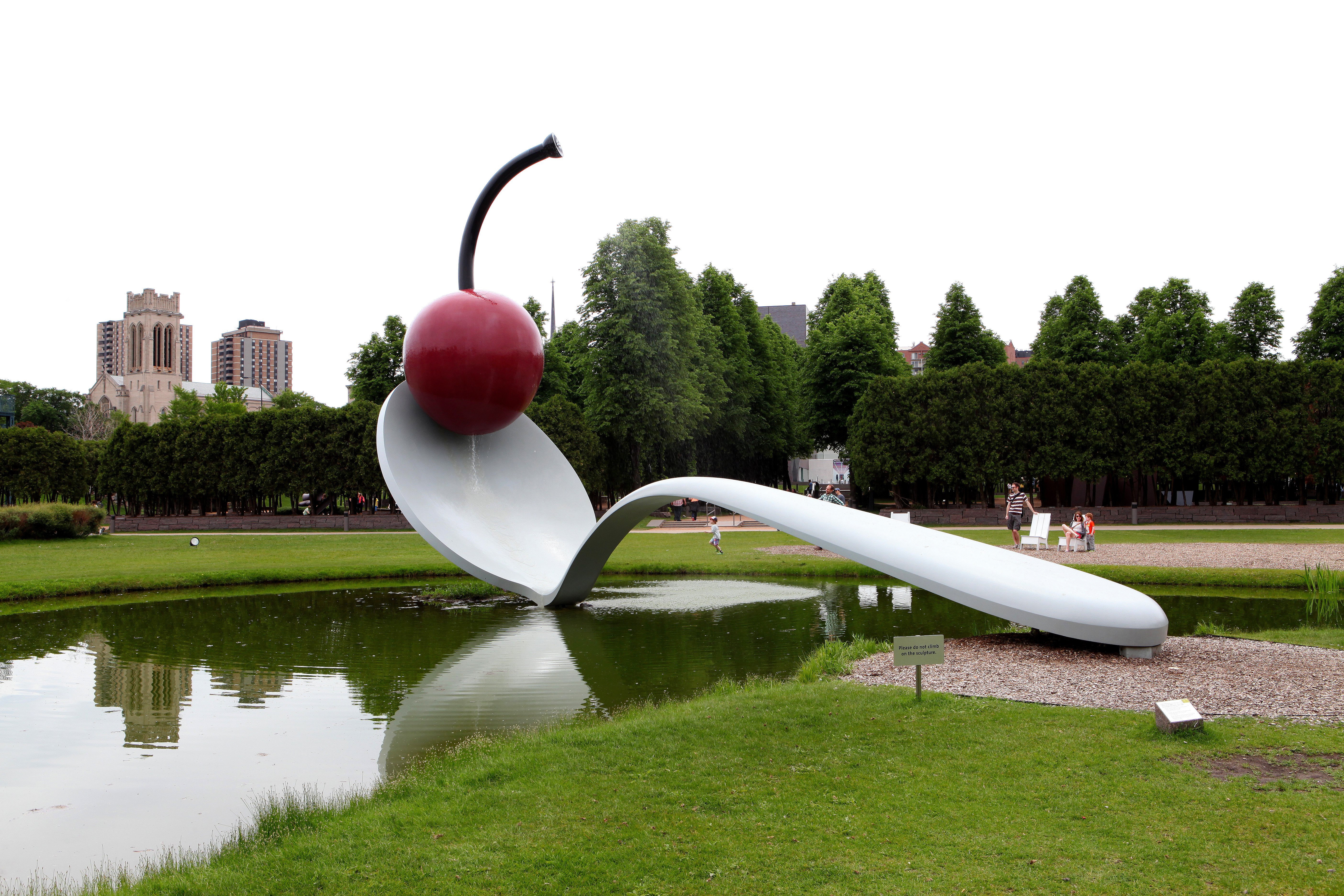
Raymond Boyd
One of the best things about public art is taking unnatural or uncanny forms and dropping them in public, natural or everyday settings, creating a pleasing dichotomy. This is certainly the case with Spoonbridge and Cherry, where the cherry's stem is a fountain which sprays into the bowl of the spoon. This sculpture was designed by Claes Oldenburg and Coosje van Bruggen in 1985 to be the centrepiece of the Walker Art Centre's Minneapolis Sculpture Garden. Oldenburg is known for his oversized renditions of everyday objects, especially food, and was inspired to create Spoonbridge and Cherry by his propensity for doodling spoons, which he’d had since childhood.
Receive our daily digest of inspiration, escapism and design stories from around the world direct to your inbox.
Prada Marfa, Elmgreen & Dragset, USA
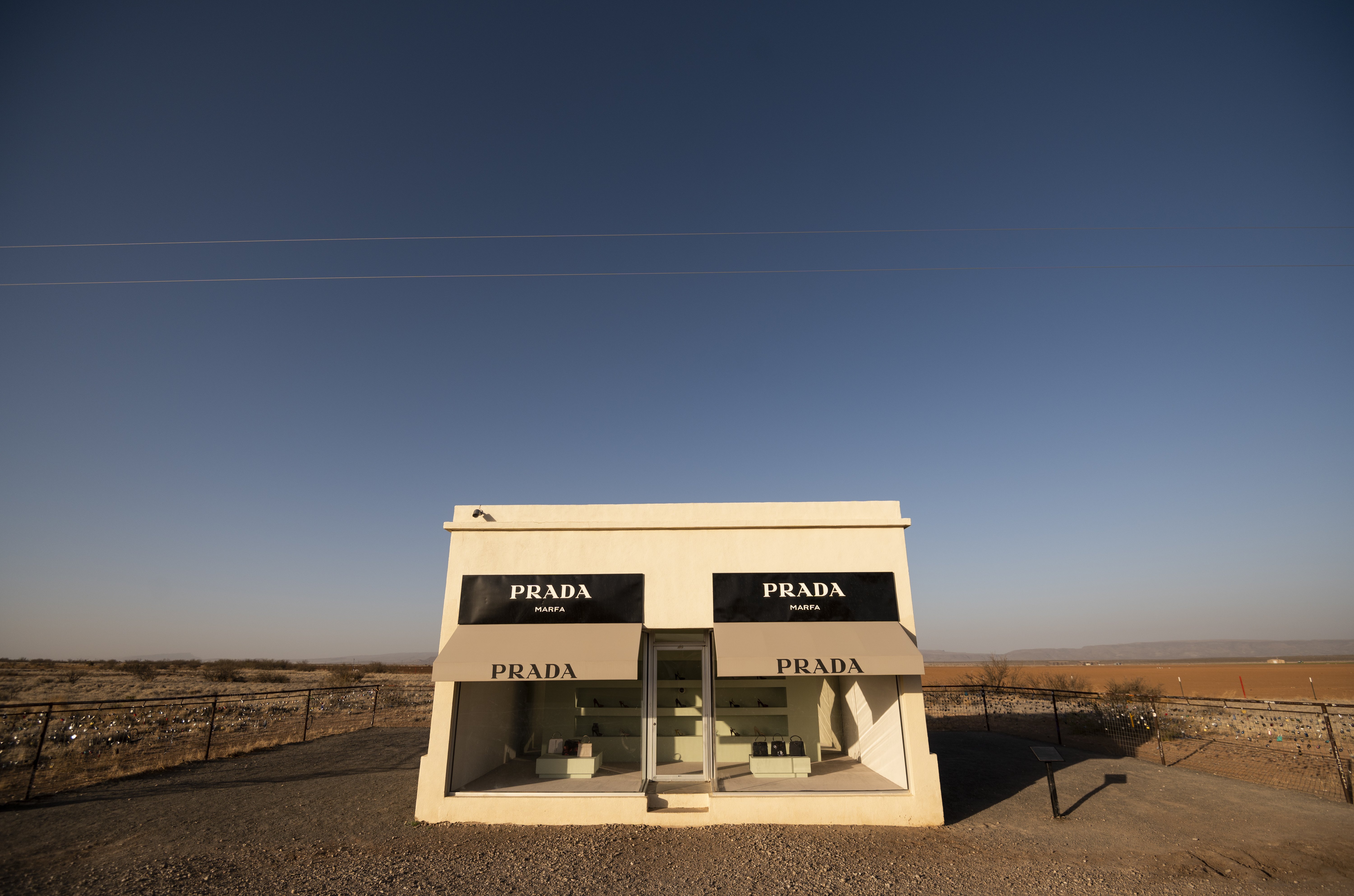
Bill Clark
Located on a barren stretch of highway in the middle of the Chihuahua desert, this iconic land art project interrogates the boundaries between sculpture and building, existing as something between an art installation, museum and fashion landmark. Prada Marfa was modelled on a Prada store and houses items from the brand’s autumn 2005 collection, but the doors are permanently locked. The faux boutique is the work of artists Elmgreen & Dragset, and was commissioned by Art Production Fund and Ballroom Marfa in 2005, defined as a ‘pop architectural land art project’.
Die Doppelgängerin, Valie Export, Switzerland
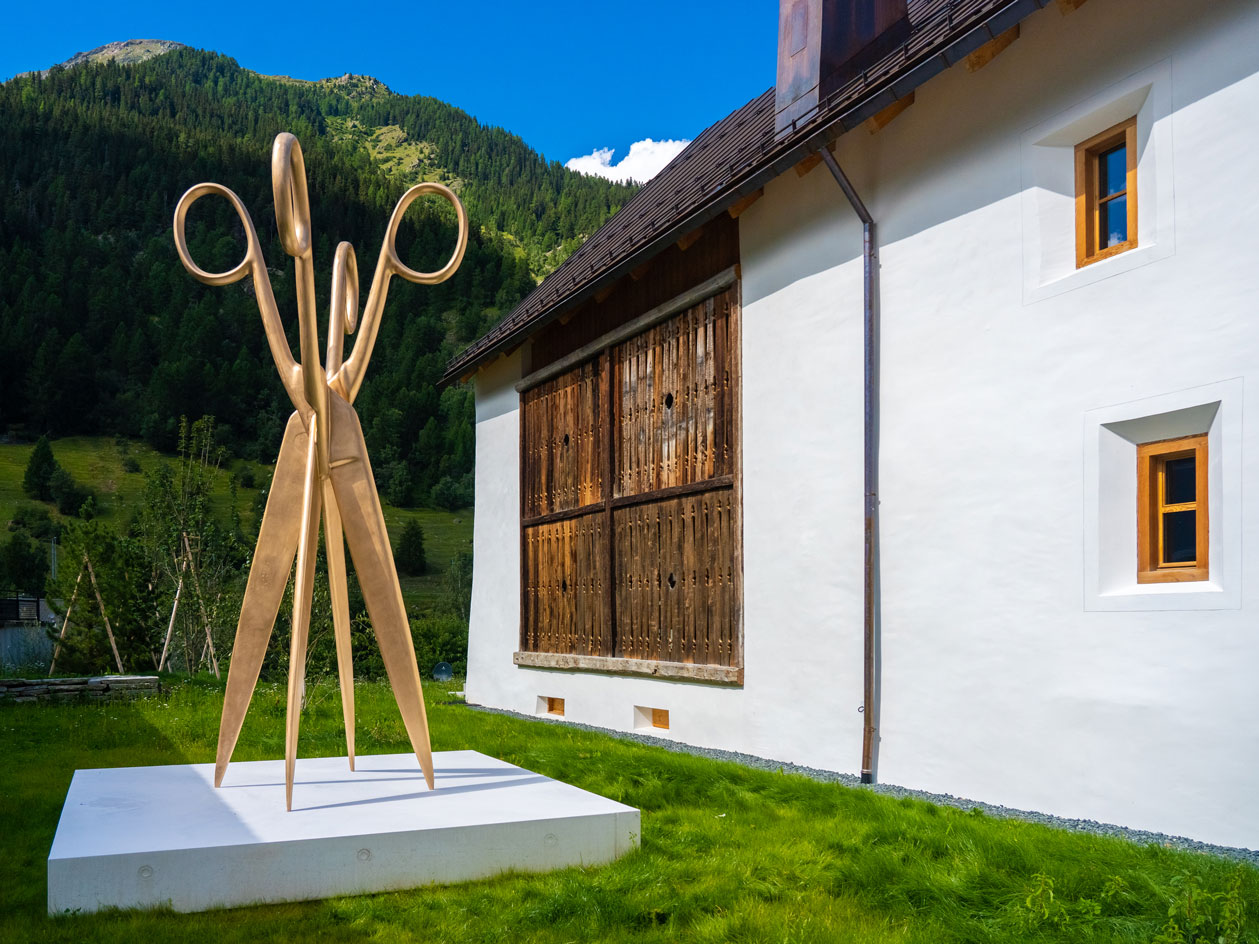
Valie Export, Die Doppelgängerin, installation view at Muzeum Susch.
Set against the bucolic wonderland of the Engadin valley is Die Doppelgängerin, a colossal sculpture by Austrian filmmaker and performance artist Valie Export. The piece – now on permanent display at Muzeum Susch – comprises a pair of double scissors: sinister in its spearing of the ground, and opulent in its gilded majesty. Die Doppelgängerin is reminiscent of Claes Oldenburg’s gigantic public interventions, or Duchamp’s reframing of everyday commercial objects. But Valie Export has transformed the domestic object into an icon of feminist art: the ‘doubled’ motif occurs frequently in the female avant-garde, symbolising a fragmented female identity.
The Gateway pool, Joana Vasconcelos, Scotland
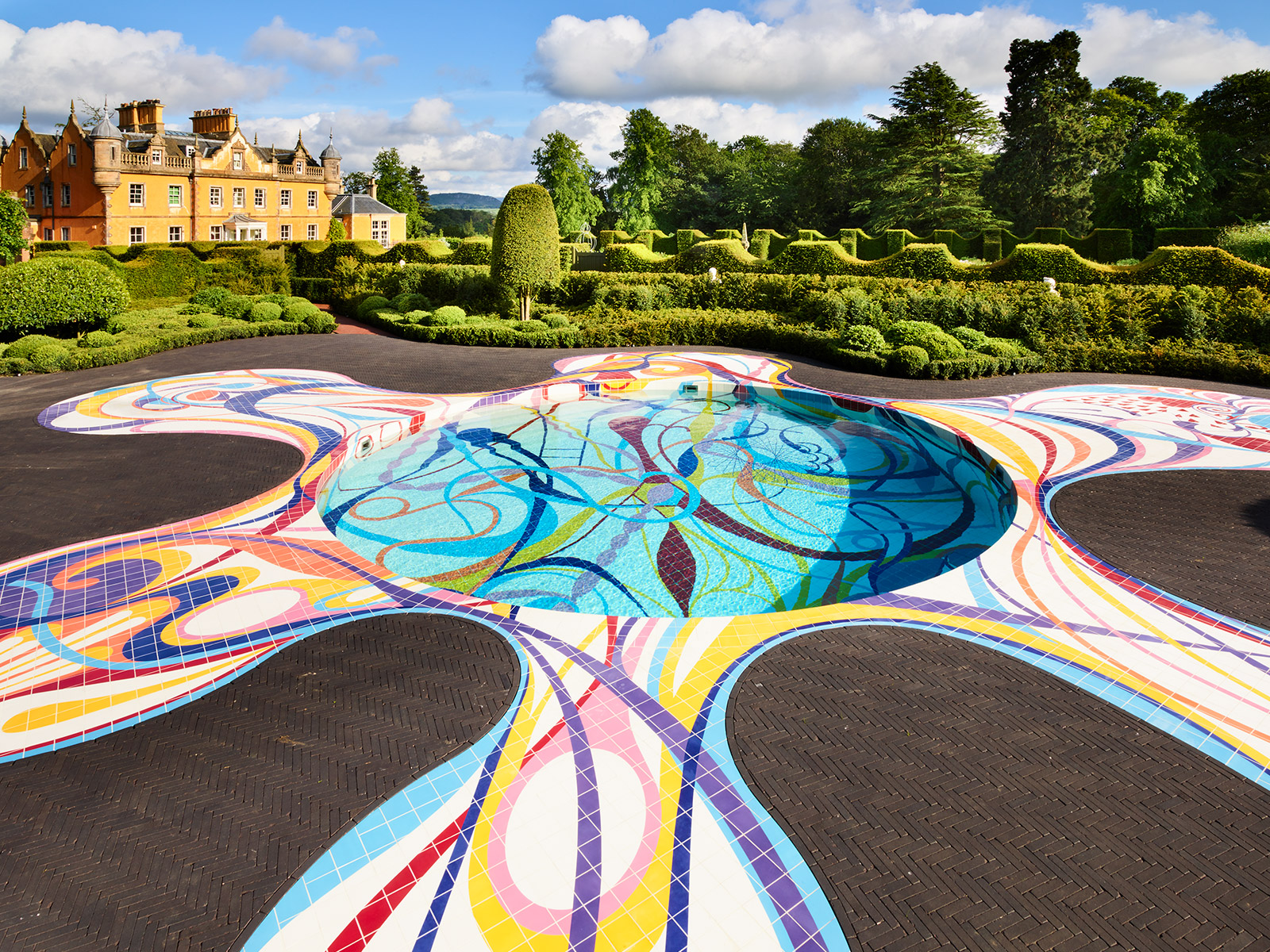
Dive into Joana Vasconcelos’ dazzling – and fully functional – swimming pool at Jupiter Artland on the outskirts of Edinburgh, where a former livestock space has been transformed into an immersive installation. Vasconcelos has incorporated patterns from her own astrological chart into the design of the pool, which comprises 11,366 hand-painted and glazed tiles crafted using traditional methods at a 100-year-old factory in the artist’s native Portugal. With Gateway, she invites visitors ‘to immerse in a joyful and spirited dimension, leading to a connection with the energy of the earth’.
Fallen Sky, Sarah Sze, USA
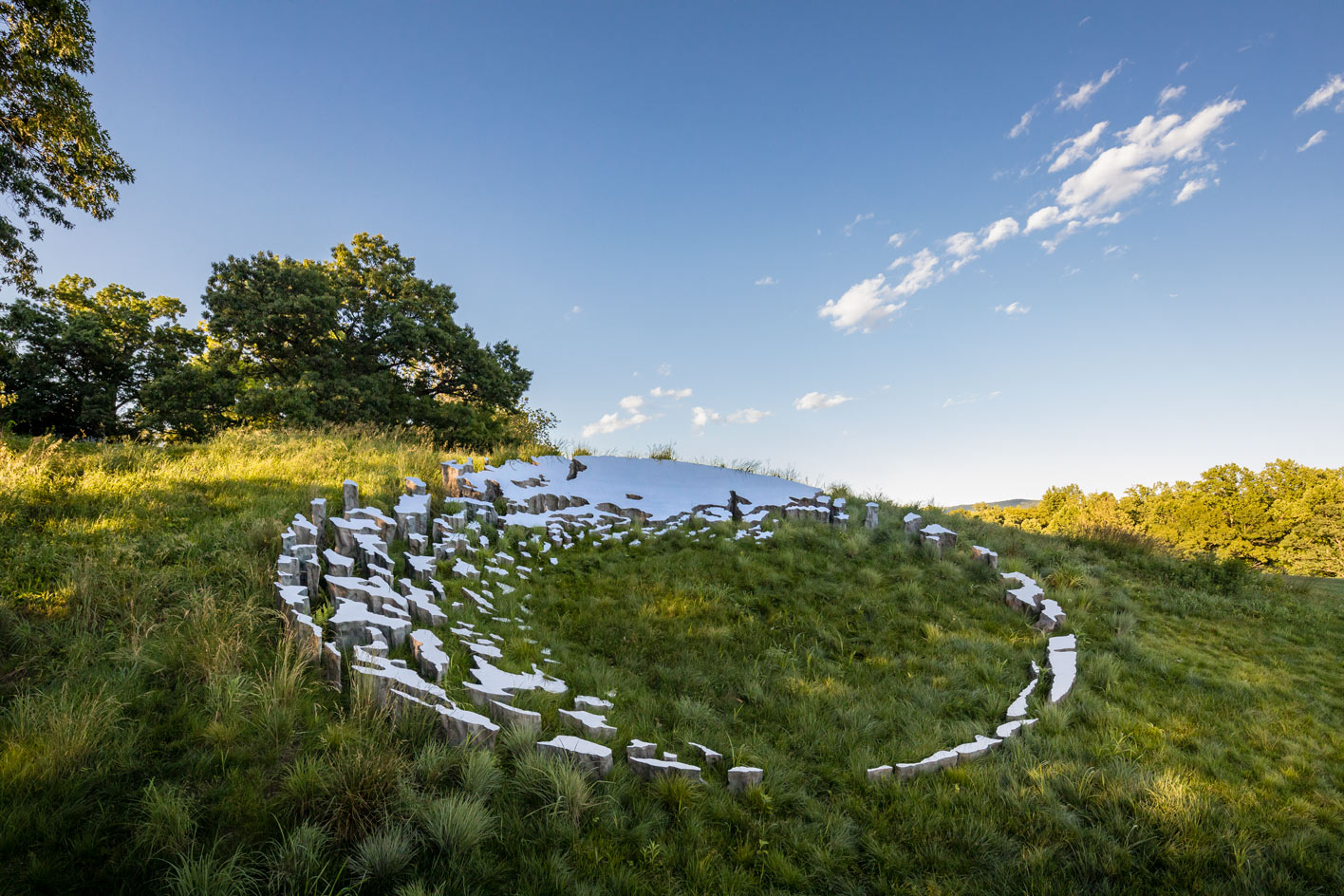
Sarah Sze, Fallen Sky, 2021. Storm King Art Center, Mountainville, NY. © Sarah Sze. courtesy of Sarah Sze Studio
American artist Sarah Sze’s permanent site-specific commission for Storm King Art Center is an exercise in reflection. Fallen Sky comprises a 36-foot-diameter spherical cavity that seems to erupt from the earth – its mirrored stainless-steel surface trapping images of its environment. Fallen Sky joins a series of site-specific commissions for the sculpture park’s permanent collection, including works by Maya Lin, Andy Goldsworthy, Isamu Noguchi and Richard Serra, among others.
Writer: Harriet Lloyd-Smith
Life Rings, Elmgreen & Dragset, Sweden
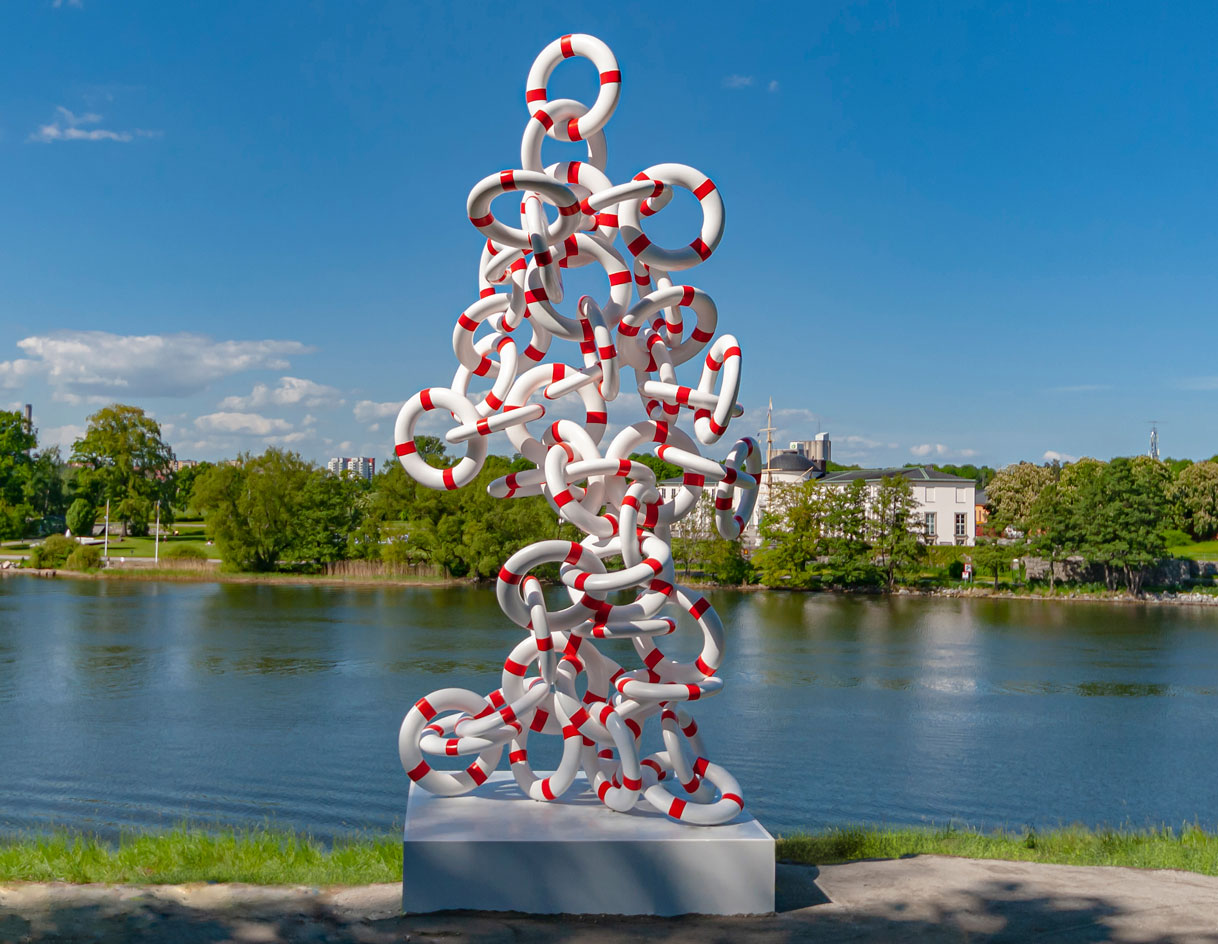
Elmgreen & Dragset, Life Rings, 2021.
On the scenic banks of the canal at the Princess Estelle Cultural Foundation’s Royal Djurgården lies an Elmgreen & Dragset's sculpture, which is fit for the setting. The interconnected circuit of life rings spirals upwards into the air, forming a collective symbol for dependency and mutual care. But as with most Elmgreen & Dragset works, there’s a twist: the rings are made of metal and unable to float. In Life Rings, the artist duo has taken the lifebuoy, a tool that signals rescue and safety in crisis, and rendered it entirely impractical.
Writer: Harriet Lloyd-Smith
Holographic Entities Reminding of the Universe, Masako Miki, USA
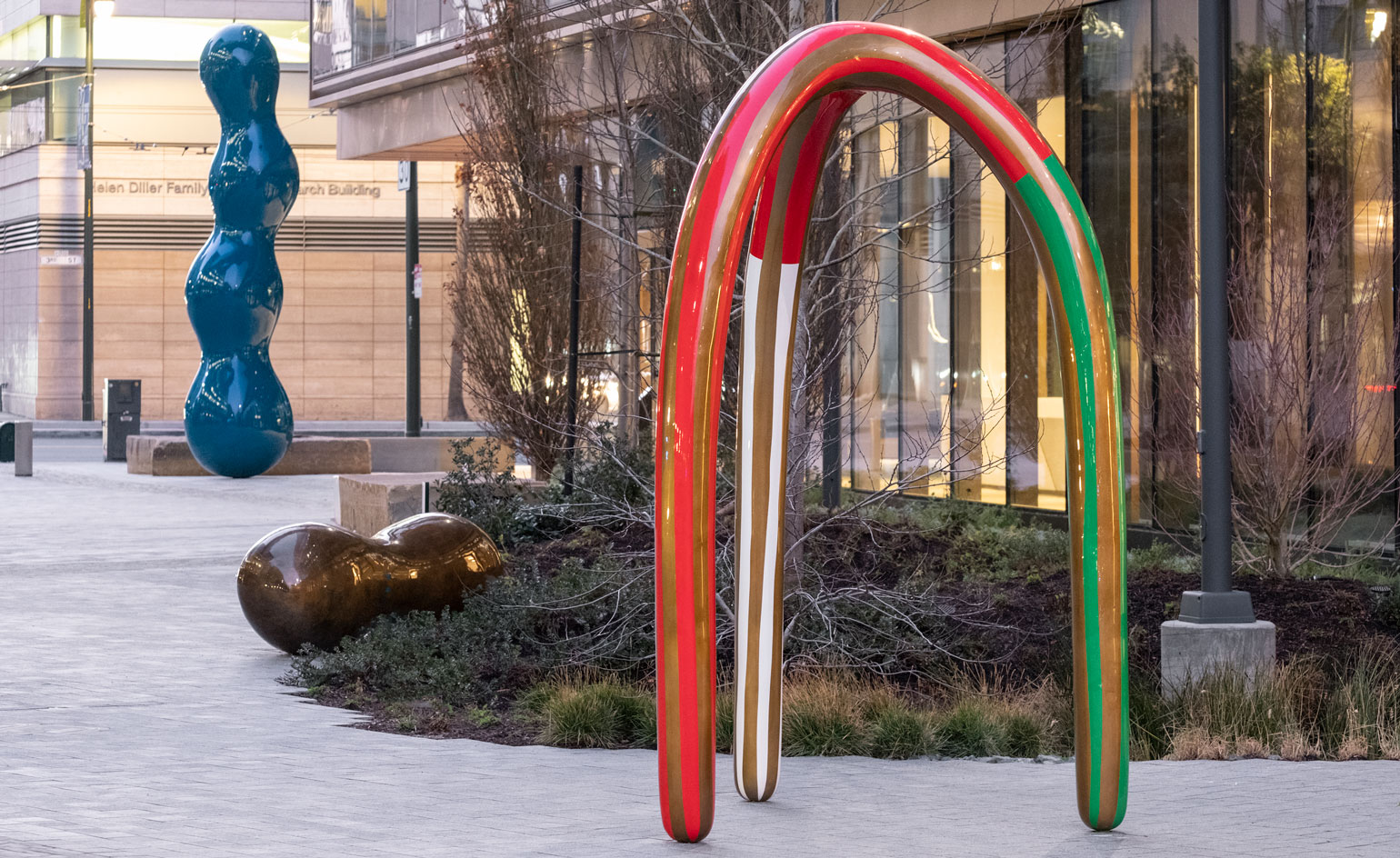
Animated Back Scratcher, 2020, Uber Public outdoor art installations: Holographic Entities Reminding of the Universe. Courtesy of the artist and CULT Aimee Friberg Exhibitions
Interdisciplinary artist Masako Miki’s Holographic Entities Reminding of the Universe are as playful as they are otherworldly. Permanently installed in public view on Uber's campus in Mission Bay, nine outdoor art installations explore the Shinto concept of the Tsukumogami yōkai - ‘shapeshifters’ that take the form of commonplace objects. Miki’s anamorphic yōkai sculptures are often created on a human scale from brightly-coloured felt wool, but now take shape as larger-than-life bronze sculptures. The artist's characters are simultaneously sacred and secular, animate and inanimate and reflect the artist's lived experience as a Japanese immigrant woman on the intersection of two cultures.
Writer: Harriet Lloyd-Smith
The Best Weapon, Snøhetta, USA
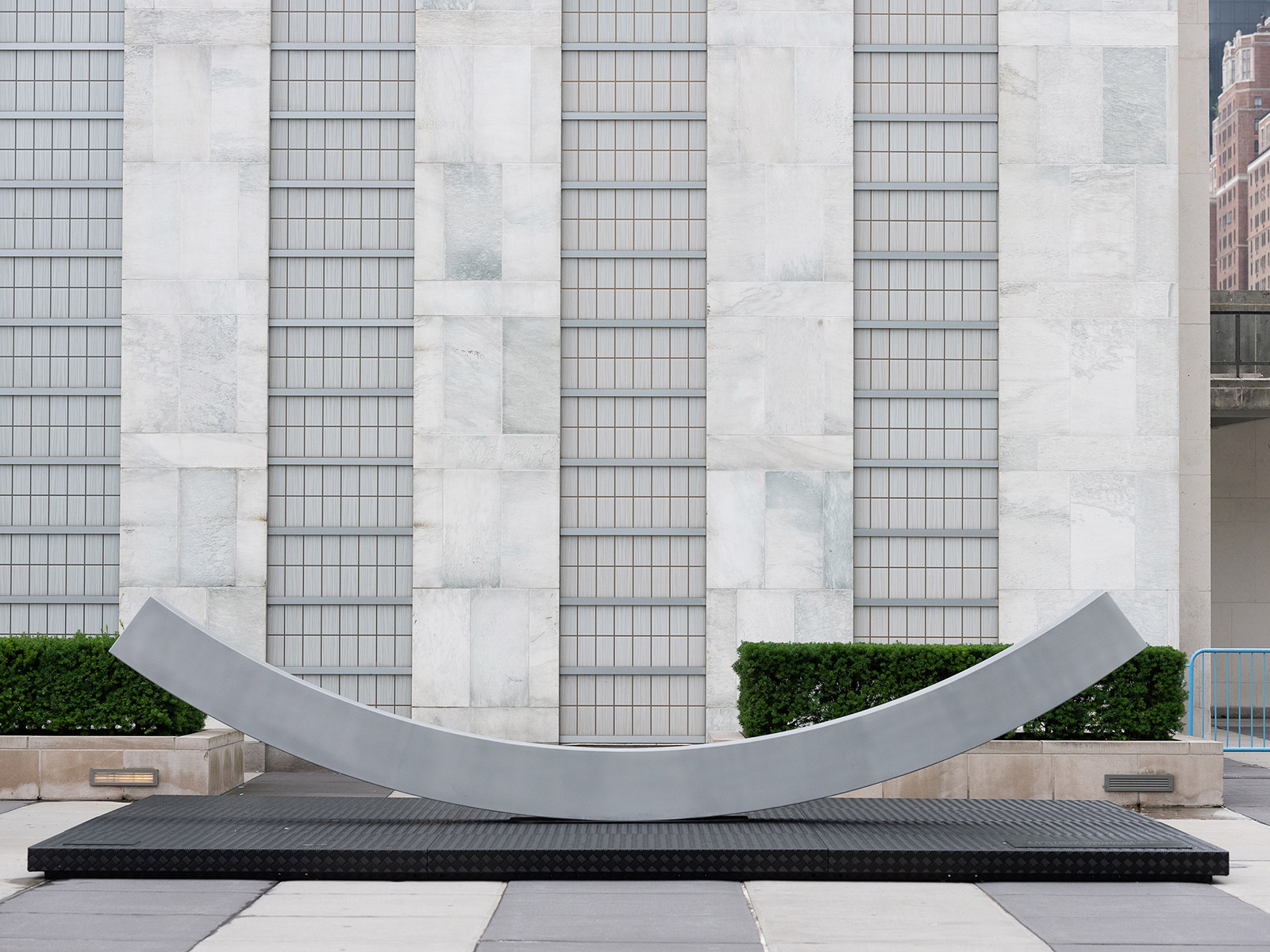
‘The best weapon is to sit down and talk,’ Nelson Mandela once said. This historic quote is the inspiration behind a ‘peach bench’ designed by architecture firm Snøhetta, which was installed in the plaza of the United Nations headquarters before being moved to a permanent location in Norway near the Nobel Peace Center and the Oslo City Hall, where the Nobel Peace Prize is awarded. The arching bench pays tribute to past Nobel Peace Prize laureates, while encouraging passersby to engage in conversation and social intimacy. Produced by Vestre in a completely carbon-neutral process, the 6.5m long installation is made from the world’s greenest aluminium, care of Norwegian renewable energy firm Hydro.
Living Spring, Eva Rothschild, UK
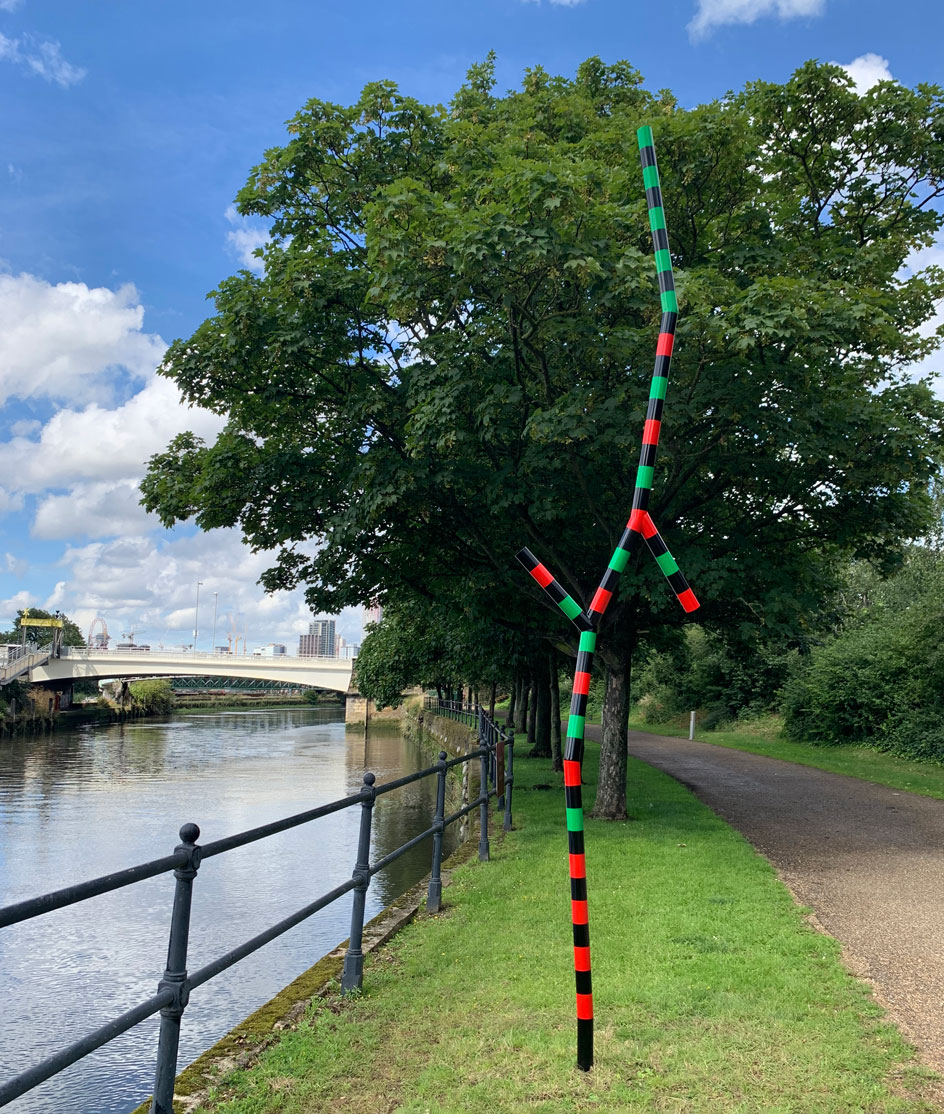
Eva Rothschild, Living Spring, River Lea at Bow Locks, The Line.
On the banks of the River Lea at Bow Creek, Eva Rothschild’s Living Spring turns heads. The sculpture is part of The Line, London’s first dedicated public art walk, and is formed of slender steel tubes painted black, red and green in Rothschild’s autograph stripe motif. The artist – who spoke to us ahead of her Venice Biennale pavilion in 2019 – offers a deceptively simple, branch-like counterpoint to the surrounding post-industrial landscape. ‘Striping forms are something I have used throughout my practice… it segments a continuous form, interrupts how we look at it and keeps us looking a bit longer,’ she says.
Anna Solomon is Wallpaper’s digital staff writer, working across all of Wallpaper.com’s core pillars. She has a special interest in interiors and curates the weekly spotlight series, The Inside Story. Before joining the team at the start of 2025, she was senior editor at Luxury London Magazine and Luxurylondon.co.uk, where she covered all things lifestyle and interviewed tastemakers such as Jimmy Choo, Michael Kors, Priya Ahluwalia, Zandra Rhodes, and Ellen von Unwerth.
-
 Each mundane object tells a story at Pace’s tribute to the everyday
Each mundane object tells a story at Pace’s tribute to the everydayIn a group exhibition, ‘Monument to the Unimportant’, artists give the seemingly insignificant – from discarded clothes to weeds in cracks – a longer look
-
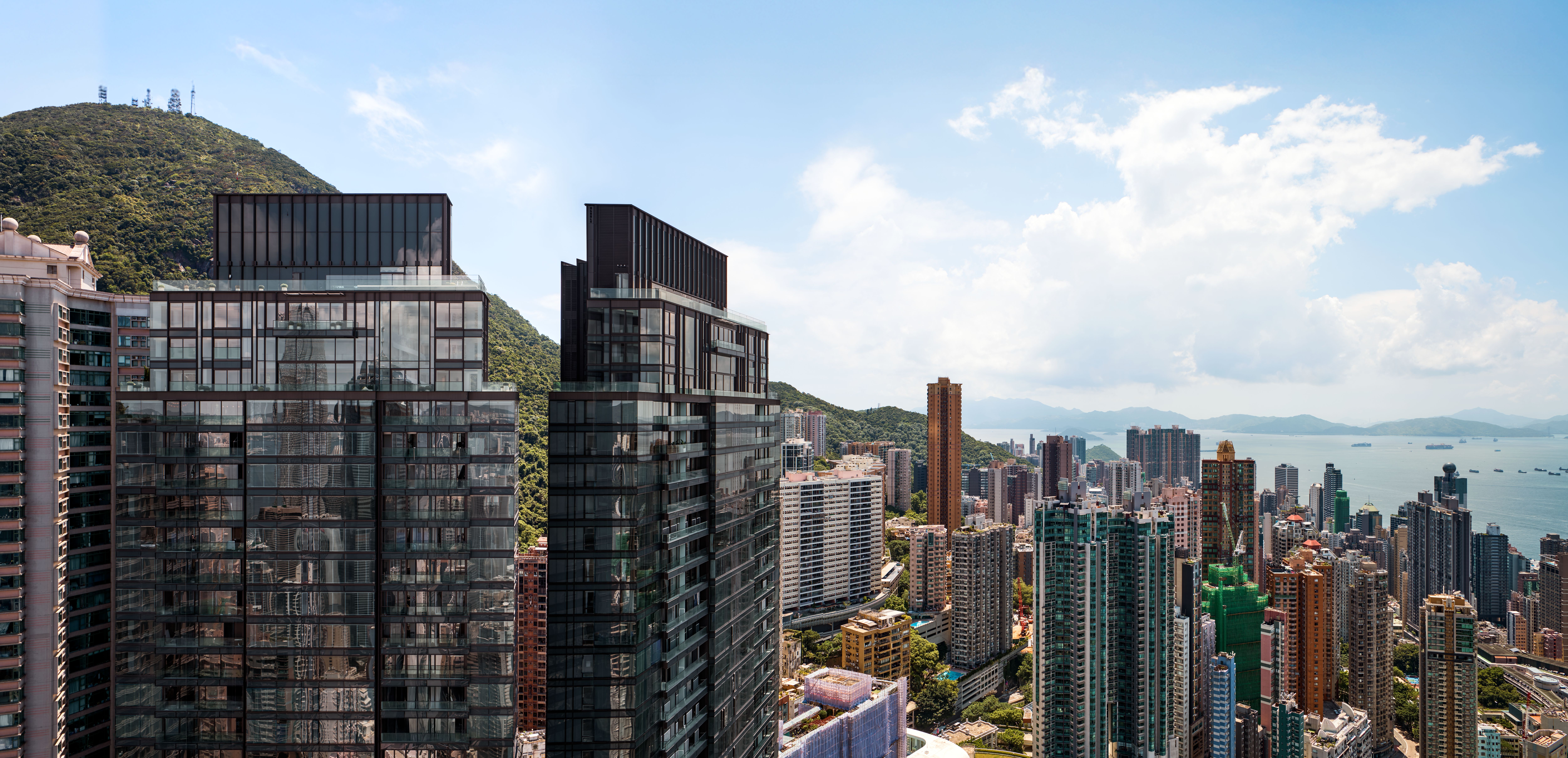 Discover The Legacy, Hong Kong’s eye-catching new condo
Discover The Legacy, Hong Kong’s eye-catching new condoThe Legacy, by ACPV Architects Antonio Citterio Patricia Viel, is a striking new condo tower that aims to ‘create a sense of community and solidarity among people’
-
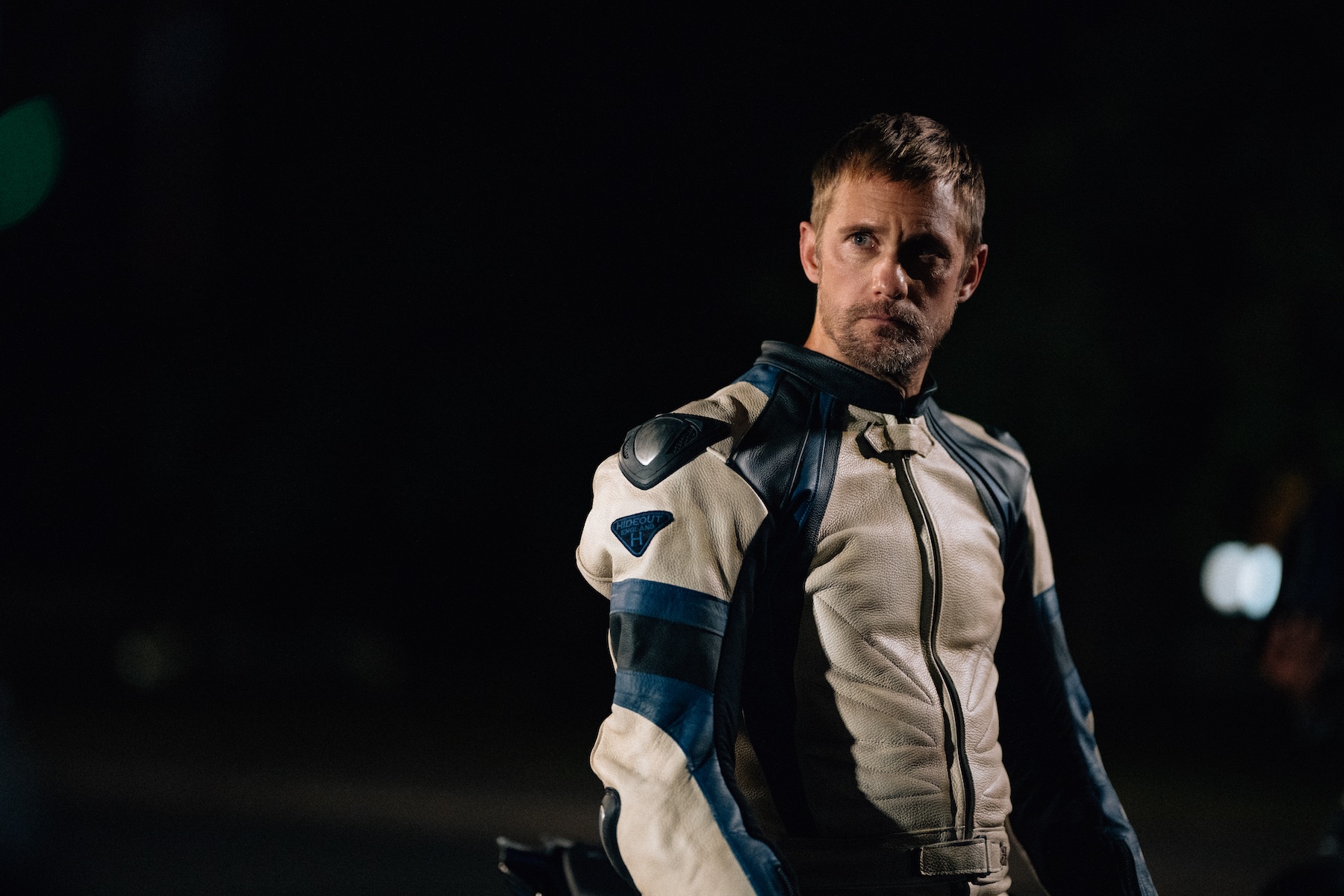 In BDSM biker romance ‘Pillion’, clothes become a medium for ‘fantasy and fetishism’
In BDSM biker romance ‘Pillion’, clothes become a medium for ‘fantasy and fetishism’Costume designer Grace Snell breaks down the leather-heavy wardrobe for the Alexander Skarsgård-starring Pillion, which traces a dom/sub relationship between a shy parking attendant and a biker